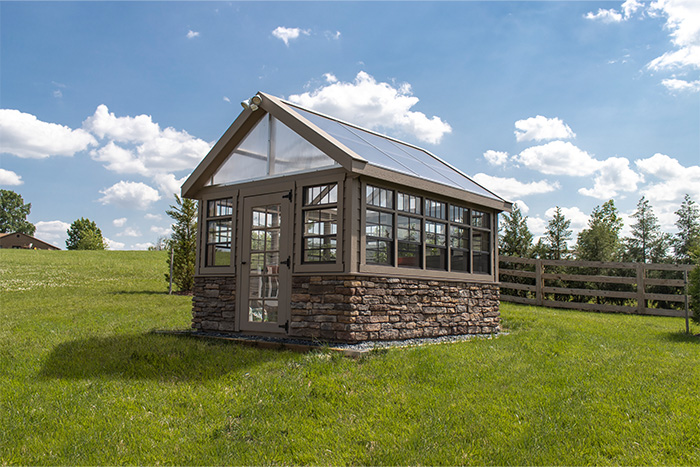
Gardening With a Greenhouse: Learning the Essentials
For gardeners who live in the Northeast, the cold temperatures and short nights of Winter means an unwilling break from their favorite hobby. The constant threat of frost puts even the heartiest of plants in danger. Plus, the lack of sunlight will keep most plant life dormant. However, there is still an option out there for those impatient gardeners who just can’t wait for warmer spring months.
Gardening with a greenhouse means hobbyist growers can start their plants far earlier than usual. The clear, insulating walls of a greenhouse let the sun’s light and warmth pass through, while holding it in to create an ideal environment for your crops.
Lapp Structures has been delivering greenhouses built and designed BY gardeners FOR gardeners for nearly ten years. Over those years we’ve picked up a few tips that we’d like to share with those interested in taking their hobby to the next level by gardening with a greenhouse.
Gardening with a Greenhouse Advantages
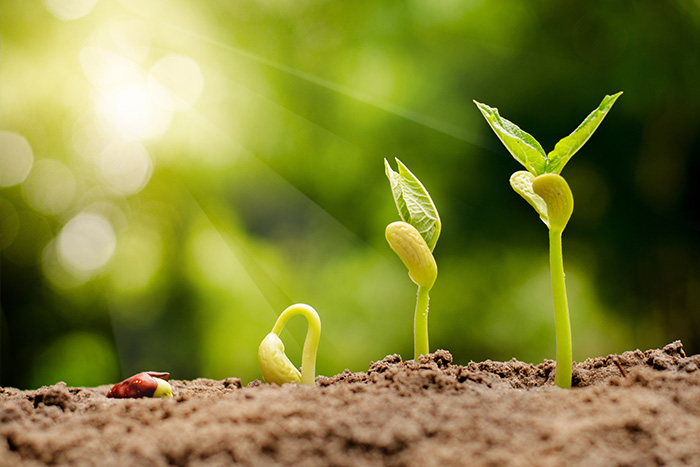
A Greenhouse allows you to provide an ideal environment for whatever plants you’d like to grow. This level of control opens up a wealth of options to gardeners including:
•Germinating Your Seeds Early
Most plants are at their most vulnerable when they’re young. The higher temperatures and humidity in a greenhouse provide a perfect environment for seedlings. This means that plants get the best start possible. Once transplanted, these seedlings can grow heartier and stronger than others.
•Growing Plants Out of Your Hardiness Zone
Some tropical plants like citrus trees and dragonfruit simply cannot grow to maturity in the north’s shorter growing season. A greenhouse can provide these plants with the tropical climate they require to bear fruit. Some additional heat and light may be required.
•Keeping your Garden Going Through Winter
While most plants will go dormant through winter, some root vegetables and leafy greens will continue growing into winter as long as it doesn’t get too cold. A greenhouse, especially one with an additional heat source, can keep some crops going all year round. This process of growing plants through winter is referred to as “overwintering.”
Types of Greenhouses
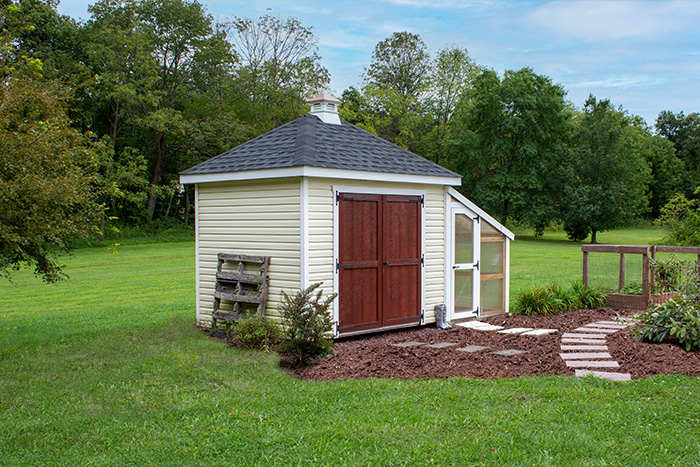
One of the first things you’ll need to consider when gardening with a greenhouse is which type of structure will be best suited for you. Greenhouses come in all sorts of styles, but most can be grouped into 3 main categories.
•Cold Frames
Typically a great choice for those who want to try Gardening with a greenhouse, without investing too heavily in it. Cold Frames are raised garden beds or boxes that include some kind of removable glazing cover for protection against the colder elements.
They’re a relatively cheap and easy way to provide plants with warmth and humidity, but they are usually short on vertical space needed for taller plants.
•Attached
As the name implies, attached greenhouses are structures that are attached to another type of building. They can range in size from enclosed window boxes, all the way to greenhouses that are the same size as the wall they’re attached to, usually of a house or shed.
Having a sturdy wall to build off of means attached greenhouses can be very stable. They can also be custom built to provide as much space as you’ll need. Your only limit is the wall it’s being fastened to! Having that solid wall on one side can cut down on the amount of sunlight your plants will get though.
•Freestanding
Being used as a kind of “catch all” classification, freestanding greenhouses are dedicated structures made specifically for growing. They can be completely custom built to meet a gardener’s needs. There’s also a wide variety of glazing, or siding, that a freestanding greenhouse can be built with. We’ll talk about these materials next.
While freestanding greenhouses can be tailored to the needs of the gardener, they are more of an investment compared to a Cold Frame. Dedicated and experienced growers will certainly get the most from these structures.
Types of Glazing
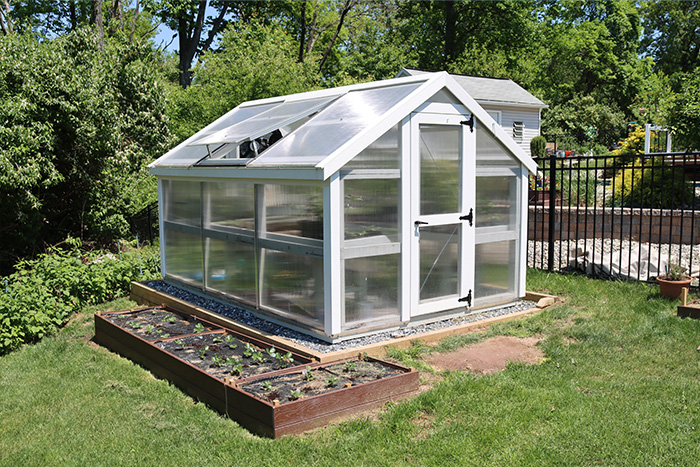
Glazing refers to the type of material being used as a greenhouse siding. It will be the main deciding factor for your greenhouse’s initial cost, longevity, and overall effectiveness. That’s why it’s important to know the pros and cons for each material.
When gardening with a greenhouse, there are 4 common types of glazing to choose from.
•Plastic Film
Plastic film is the one of the most popular glazing materials out there, thanks to its low costs, and ease of installation. It’s wonderful at diffusing light, meaning it allows the sun’s energy to pass through straight to your plant life. Plus, it can be a decent insulator, especially if you double up on layers.
It’s not all good news though, as plastic film has a fairly short lifespan. Over time, sunlight and temperature swings can turn your film brittle, and susceptible to tears. It can also yellow over time, which reduces the amount of light your plants receive.
•Glass
Glass is considered by most experts to be the ideal material for greenhouse glazing. Thanks to its unmatched light diffusion, plants grown in a glass greenhouse are able to soak up more energy for photosynthesis. Double layered glass is also a highly effective insulator that holds up extremely well to sun exposure and temperature swings.
There are two major cons when considering a glass glazing: the cost, and its low impact resistance. Double layered insulated glass is considerably more expensive than other options. While they hold up well to long-term environmental changes, they can still shatter and crack from impacts and may need to be replaced from time to time.
•Fiberglass
This glazing material is a popular choice for areas that experience more extreme weather, like frequent hail. Fiberglass is a relatively inexpensive material that holds up well to impact. It also require less structural backing when compared to glass.
While it can hold up well in the short term, it’s longevity is not great. Fiberglass tends to swell over long periods of UV exposure. In as little as 5 years, the UV breakdown of fiberglass can severely limit the amount of sunlight exposure to your plants. It’s also very combustible, which is a major concern for any hobbyist gardener out there.
•Polycarbonate
Polycarbonate is one of the newest materials to be adopted as greenhouse glazing. It hits a sweet spot between long-term resilience and impact resistance, and reasonable cost. It’s also light and flexible which makes it easy to work with. Plus, twin-wall polycarbonate has very good light diffusion, and is an even better insulator than plastic film & fiberglass.
We may be a little biased, but we firmly believe that polycarbonate is your best long-term option when gardening with a greenhouse. That’s why all of our greenhouse styles feature twin-wall polycarbonate panels in their construction.
Like with everything, there are some downsides to polycarbonate though. Lower quality panels can yellow after long periods of sun exposure. Also, when not assembled properly, moisture can become trapped in twin-wall panels which encourages algae growth. The initial price tag for polycarbonate is also higher than most glazing options, but is usually worth it in the long run.
Other Accessories to Consider
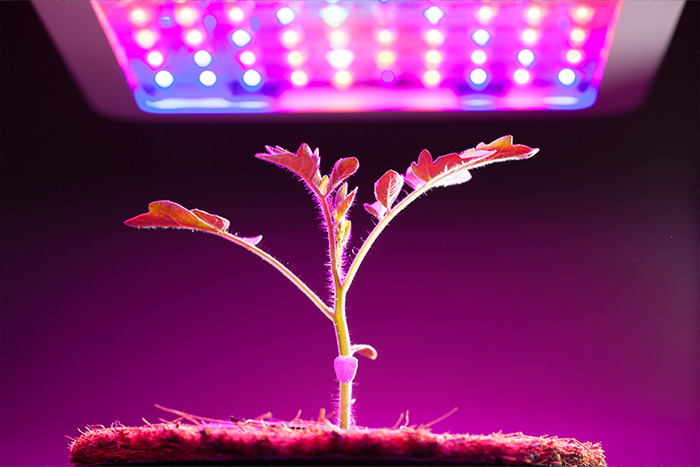
Gardening with a greenhouse gives you an enclosed space with more control over its environment, but it’s not completely self-regulating. Temperatures in your greenhouse can still reach dangerously high or low levels depending on your area. You may want to consider some extra accessories to help you better control its growing conditions.
•Ventilation Fans
Ventilation in your greenhouse should be an absolute necessity. If left unchecked, temperatures inside can climb to dangerously high levels, leaving your plants inside weak and wilted. Plus, most plants respond positively to light airflow.
If purchasing a custom greenhouse from Lapp Structures, consider our Solar Fan Vent Package, which includes fan, louvered vent, thermostat, and solar panel. This kit will give you everything necessary to help keep your greenhouse’s temperature in check without needing an electrical hookup.
•Heaters
Heaters may be necessary if you live in an area that experiences long stretches of below-freezing temperatures. Regardless of how good your insulation is, chances are you’ll need some extra heat to keep your plants in a comfortable climate.
There are many types and sizes of greenhouse heaters available. Which type you should choose depends on your greenhouse’s dimensions. Smaller greenhouses (around 200 – 400 square feet) that are not connected to your home’s electric can make use of small propane heaters, or even solar powered options. Larger greenhouses with an electric hookup should consider a larger mounted electric heater that can keep up with even the coldest of conditions.
•Grow Lights
If you plan overwintering your crops, or germinating your plants during the winter months, a grow light should be seriously considered. The shorter days of winter mean plants won’t receive an adequate amount of sunlight to sustain themselves. Overwintering crops will go dormant, and germinating seeds will grow thin and lanky in a desperate attempt to grow closer to its light source.
There are different types of grow lights available to you, so you should consider a light’s initial upfront cost, vs it’s cost to run. High-Intensity Discharge (HID) bulbs can be inexpensive to set up, but their high heat discharge and energy consumption mean they can cost more over time. By contrast, LED panels have become quite popular recently, due to lower operating cost. Unfortunately, they don’t provide as much light as HID bulbs, and can be pricier to set up initially.
A gardener should not take their choice of grow light lightly. We recommend taking some time to research your plants’ specific needs and choose accordingly. We also recommend setting your lights up on an automatic timer to ensure your plants stay on a regular cycle.
What Works Best For You
As most seasoned gardeners will tell you; gardening is easy to pick up, but hard to do consistently well. Gardening with a greenhouse shouldn’t be seen as a foolproof method to bigger crops. Rather, it’s a tool that allows you to enjoy your hobby longer than normally possible.
There’s a nearly endless well of gardening information to learn, but it will ultimately come up to you to decide what’s best for you, and your specific gardening needs.
If you’re ready to take the plunge, and enjoy nearly year-round growing, consider giving us a call! Lapp Structures can deliver a high-quality polycarbonate greenhouse designed and built BY gardeners FOR gardeners.
We currently offer three different freestanding styles of greenhouses that are all as attractive as they are functional. We can even build an attached greenhouse to nearly any of our shed & garage styles!
Speak to a friendly Design Consultant, and start dreaming about your new winter crops today.
